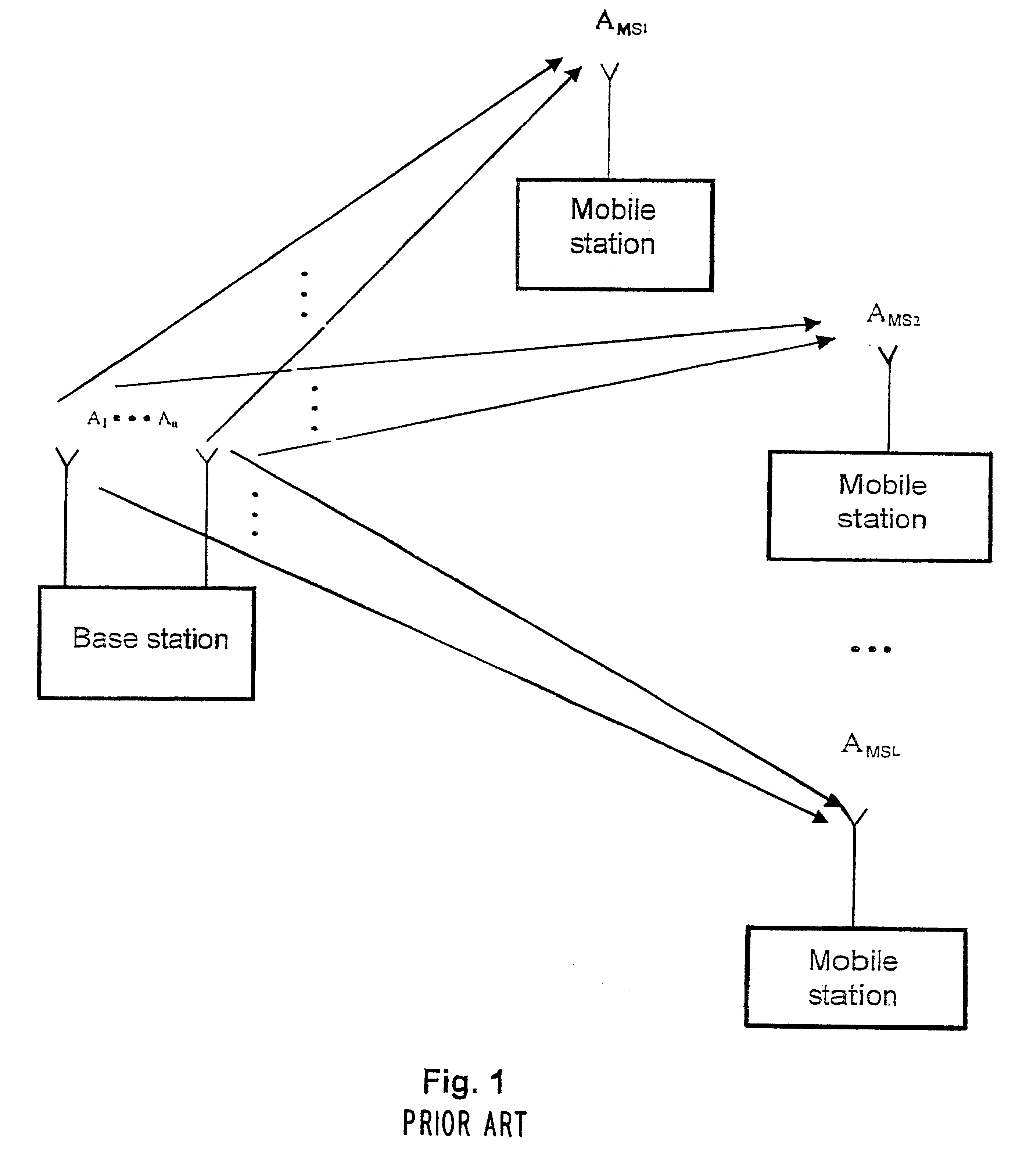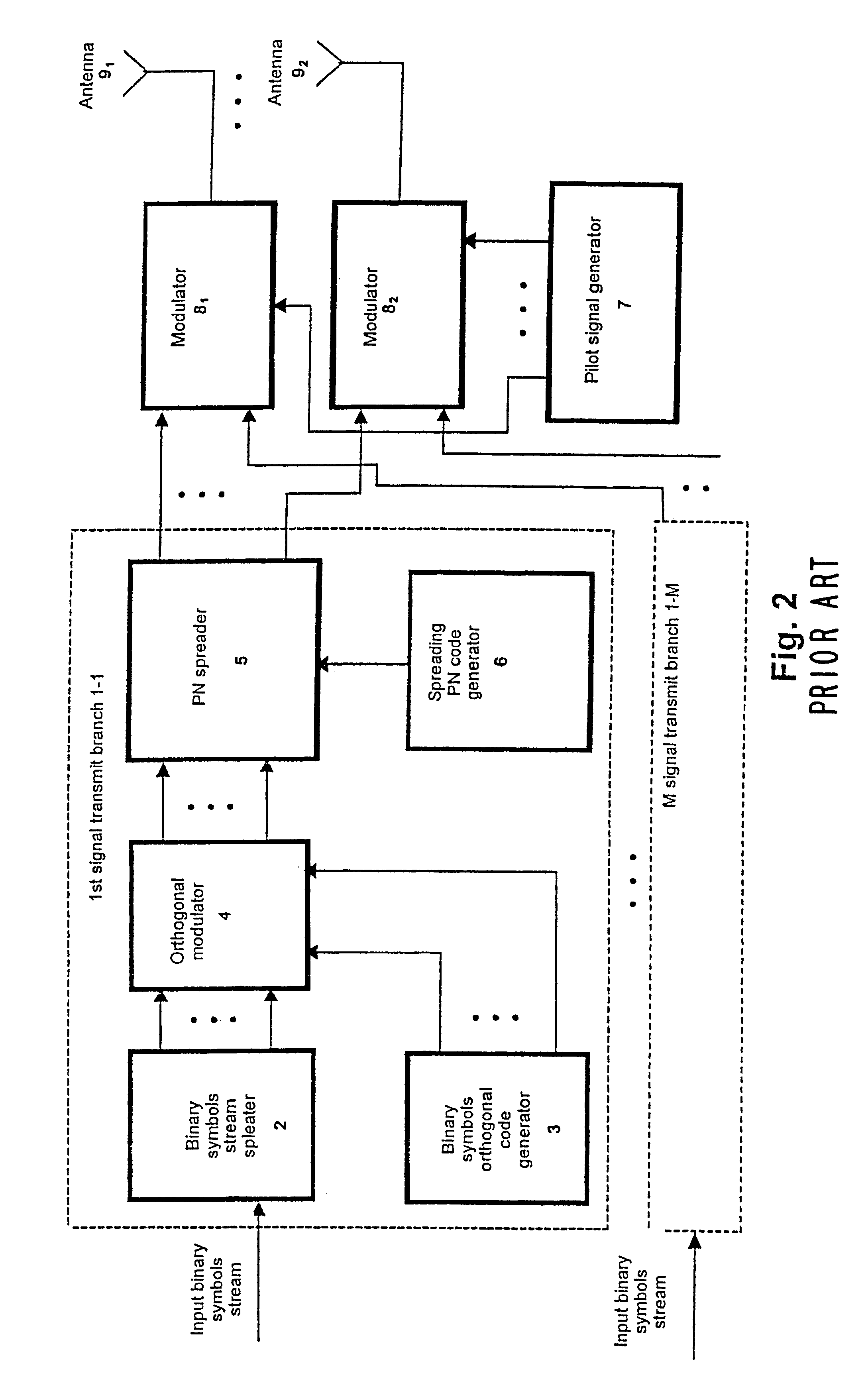Method for the orthogonal and offset transmission-reception of a signal and device for realizing the same
a transmission-reception and signal technology, applied in the direction of transmission, forward error control, electrical equipment, etc., can solve the problems of reducing system capacity, affecting the application of space receive diversity in mobile terminals, and increasing equipment costs
- Summary
- Abstract
- Description
- Claims
- Application Information
AI Technical Summary
Benefits of technology
Problems solved by technology
Method used
Image
Examples
Embodiment Construction
The device of orthogonal transmit-receive diversity according to the present invention, shown on FIGS. 6, 7 and 8, on the transmitting side (FIG. 6), contains: M signal transmit branches 22-1-22-M (let us assume that the system includes M users), pilot signal generator 30, N modulators 31-1-31-N and N antennas 32-1-32-N, each signal transmit branch 22-1-22-M contains serially linked generator of serial-parallel binary symbol packet generator 23 and binary symbol reordering unit 24, and also serially linked serial-parallel binary orthogonal code symbol packet generator 25 and binary orthogonal code symbol reordering unit 26, in each signal transmit branch 22-1-22-M, the first input of serial-parallel binary symbol packet generator 23 is the input of the device, the second input of serial-parallel binary symbol packet generator 23 is combined with the second inputs of binary symbol reordering unit 24, serial-parallel binary orthogonal code symbol packet generator 25 and binary orthogo...
PUM
 Login to View More
Login to View More Abstract
Description
Claims
Application Information
 Login to View More
Login to View More - R&D
- Intellectual Property
- Life Sciences
- Materials
- Tech Scout
- Unparalleled Data Quality
- Higher Quality Content
- 60% Fewer Hallucinations
Browse by: Latest US Patents, China's latest patents, Technical Efficacy Thesaurus, Application Domain, Technology Topic, Popular Technical Reports.
© 2025 PatSnap. All rights reserved.Legal|Privacy policy|Modern Slavery Act Transparency Statement|Sitemap|About US| Contact US: help@patsnap.com



